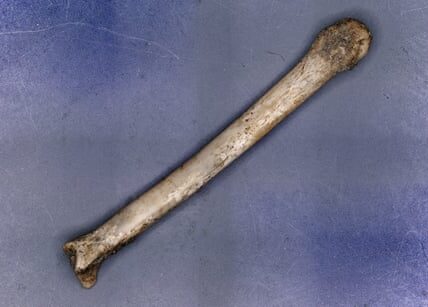The blue eyes of reindeer function as night vision aids to assist them in locating food during the winter season.

Scientists have determined that Rudolph’s famous red nose is not necessary for guiding his fellow reindeer, as they possess a unique type of night vision that aids in finding food.
Scientists studied the reason behind why these species are unique in their ability to have eyes that alter in color according to the season, transitioning from a golden-orange shade during summer to a blue tone during winter.
The research discovered that the change in color assists them in enhancing their vision during the winter months when there is a lot of snow, but it also enables their eyes to process ultraviolet light.
The researchers noted that this poses additional inquiries, as the snow’s reflection of UV rays from the sun leads to the species absorbing twice the amount of UV light due to their superior eyesight.
According to them, this is why deer have good vision at night and can search for food like lichen.
The research was headed by Professor Nathaniel Dominy, an anthropologist from Dartmouth College in the United States, along with Dr. Catherine Hobaiter and Professor Julie Harris from the University of St Andrews’ School of Psychology and Neuroscience.
Hobaiter stated that for humans and most mammals, it is difficult to see pale lichen in white snow. However, for reindeer, the species they need to eat would be easily visible as dark patches in the highly reflective snowy environment.
Reindeer are known to consume a specific type of lichen known as Cladonia rangiferina, which is commonly called “reindeer moss”.
The type of lichen that is crucial for reindeer’s survival is not actually moss, but rather grows in sponge-like formations throughout the northern regions.
According to Hobaiter, there has been a previous theory that the night vision of reindeer evolved as a means to find lichen to eat, but previous experiments did not find strong support for this idea.
According to her, there are more than 13,000 types of lichen found globally and so far, none of these species have been examined for their impact on reindeer food.
She mentioned that Scotland has a remarkable lichen variety, with the Highlands supporting more than 1,500 species and the Cairngorms housing a group of reindeer that were brought back to Scotland after being wiped out. Thus, Scotland is an ideal location to attempt to unravel this mystery.
In March, the team started their investigation in the Cairngorms mountain range located in the eastern Highlands to locate lichen beds. They used UV light to capture photos of different lichen beds and discovered that each species had a unique way of absorbing or reflecting light. They also observed that “reindeer moss” had a strong light absorption ability.
According to Dominy, reindeer prefer a direct path to their food in the white landscape, as they do not want to expend unnecessary energy searching for food in the cold and barren environment.
Being able to spot lichens from far away gives them a significant edge, allowing them to save valuable energy during times of limited food supply.
.
The report was contributed by PA Media.
Source: theguardian.com


